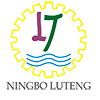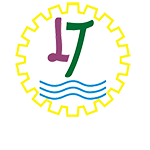The human body is composed of different organs
by:Luteng CNC Parts
2020-08-22
The same is true with a car. The car has different parts functioning together to make it work. Take for example the powertrain in a car. The powertrain is made up of four parts, namely the engine, transmission, driveshafts, differentials and the final drive.
Ever wonder how your car works? It has everything to do with the powertrain. So how does this powertrain work? The powertrain has components that work together to generate power and deliver it to where the power will be used or applied. In simpler terms, we can say that the power is supplied from the engine, via the gearbox to a driveshaft, which runs to the real axle. But for information purposes, I will discuss each part and its function.
The first part is the engine. The internal combustion engine is a heat engine in which the burning of fuel occurs in a confined space called a combustion chamber. This exothermic reaction of a fuel with an oxidizer creates gases of high temperature and pressure which are permitted to expand. The defining feature of an internal combustion engine is that useful work is performed by the expanding hot gases acting directly to cause movement, for example by acting on pistons, rotors, or even by pressing on and moving the entire engine itself.
The purpose of a gasoline car engine is to convert gasoline into motion so that your car can move. Currently the easiest way to create motion from gasoline is to burn the gasoline inside an engine. Therefore, a car engine is n internal combustion engine combustion takes place internally.
And because of the physics of the gasoline engine, cars need transmissions, which is the second part of the powertrain. Any engine has a maximum rpm value which is called the redline.If the engine goes over this value, it will definitely explode since engines have narrow rpm ranges where horsepower and torque are at their maximum. Engines typically operate over a range of 600 to about 6000 revolutions, though this differs from design to design. On the other hand, the car's wheels rotate between 0 rpm and around 2500 rpm. The transmission allows the great ratio between the engine and the drive wheels to change as the car speeds up and slows down. This is why you shift gears so that the engine can stay below the red line and near the rpm band of its best performance. The transmission is connected to the engine through the clutch. The input shaft of the transmission therefore returns at the same rpm of the engine.
The driveshaft, on the other hand, is a mechanical device used for transferring power from the engine to the point where useful work is applied, which is usually the wheels. The driveshaft are carries of torque which is the main reason why they need to be strong.
The differential is a device consisting of gears specially designed to drive a pair of wheels with equal force, while allowing them to rotate at different speeds. Without the differential, there will surely be damages to tires, strain on the entire drivetrain and difficult handling. And lastly, the final drive is the set of drive wheels.
All these parts of the powertrain contributes to the the process of generating power from the engine and delivering it to the wheels. We can therefore say that the powertrain is the heart and soul of your car.
Custom message



















